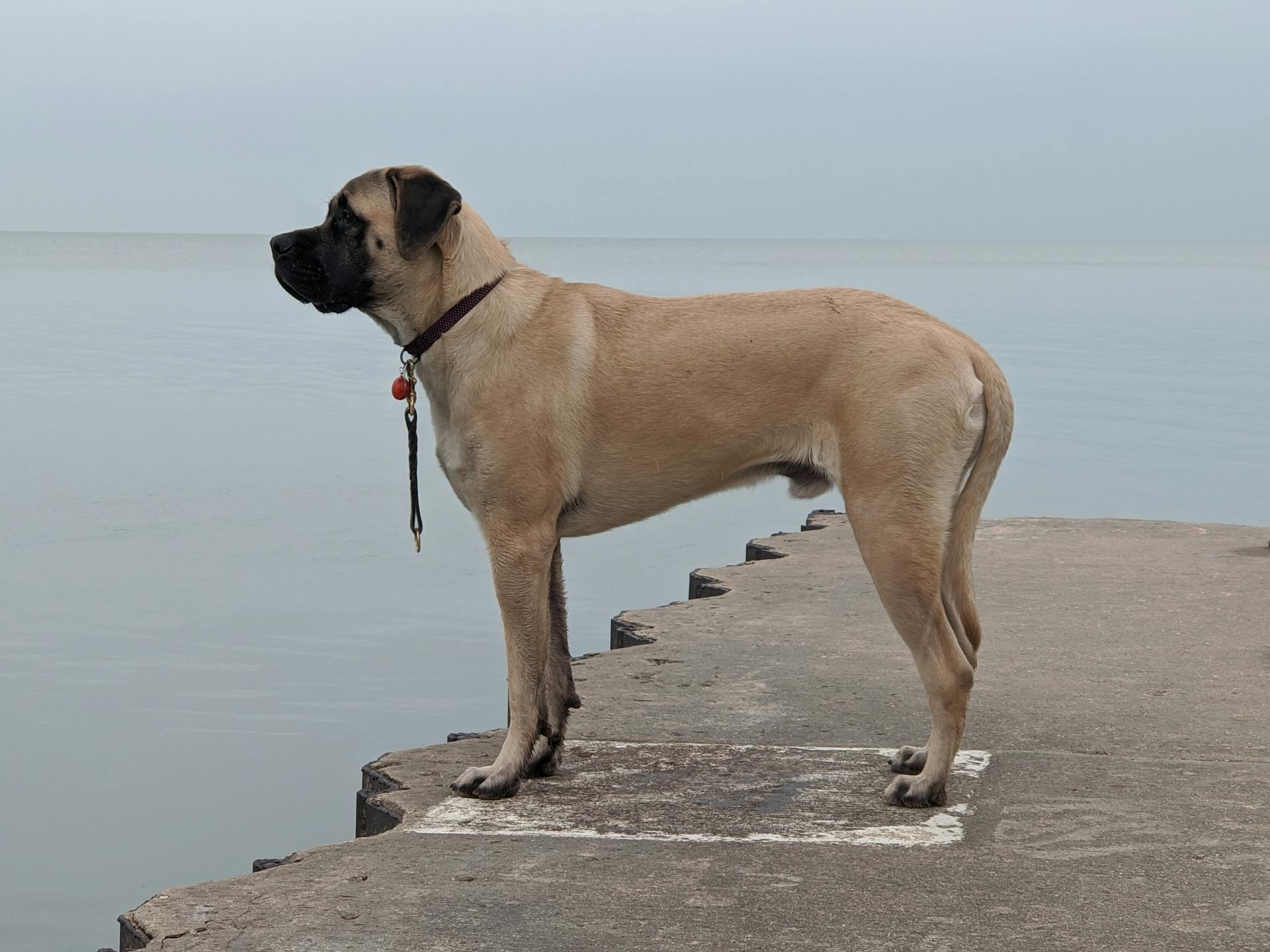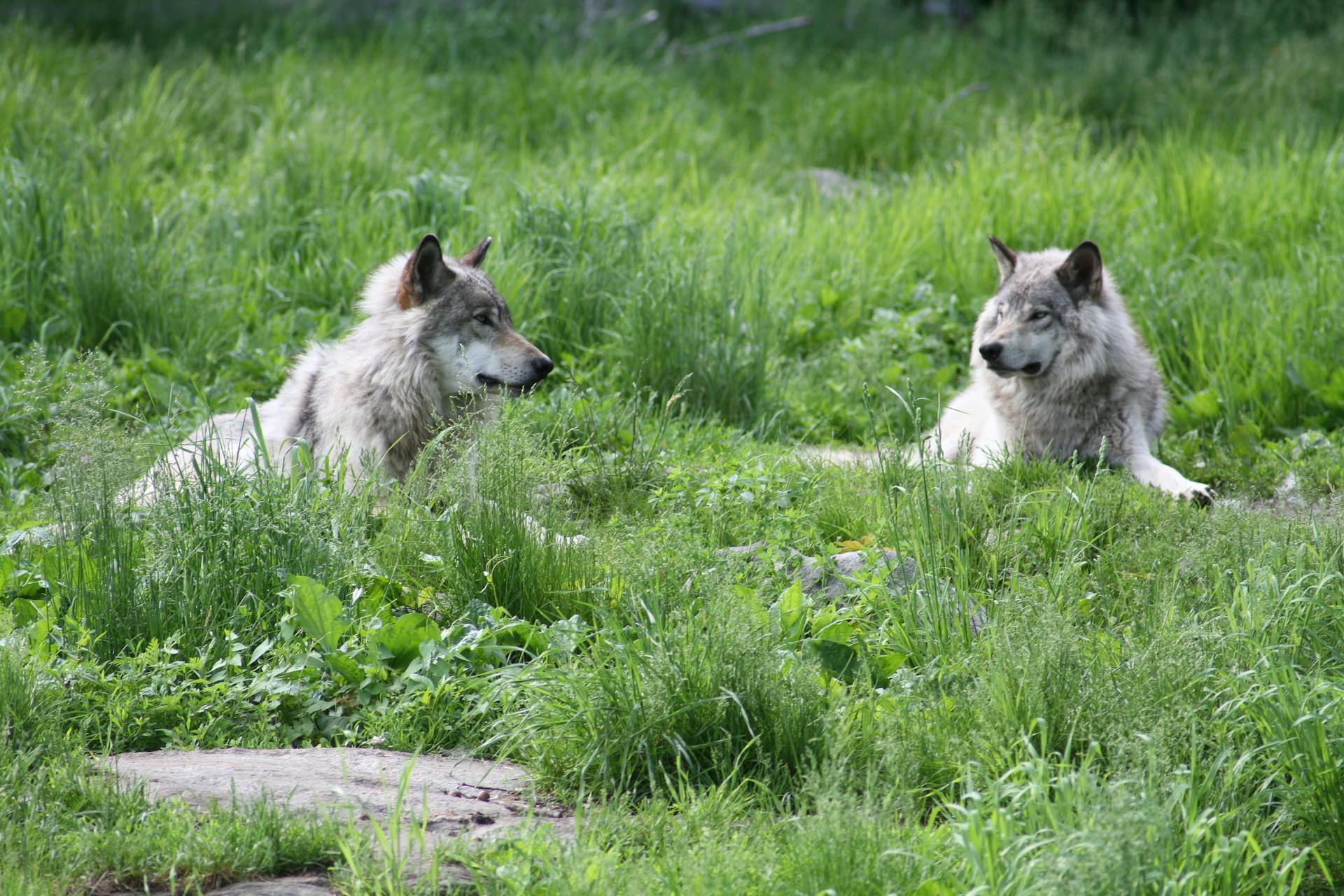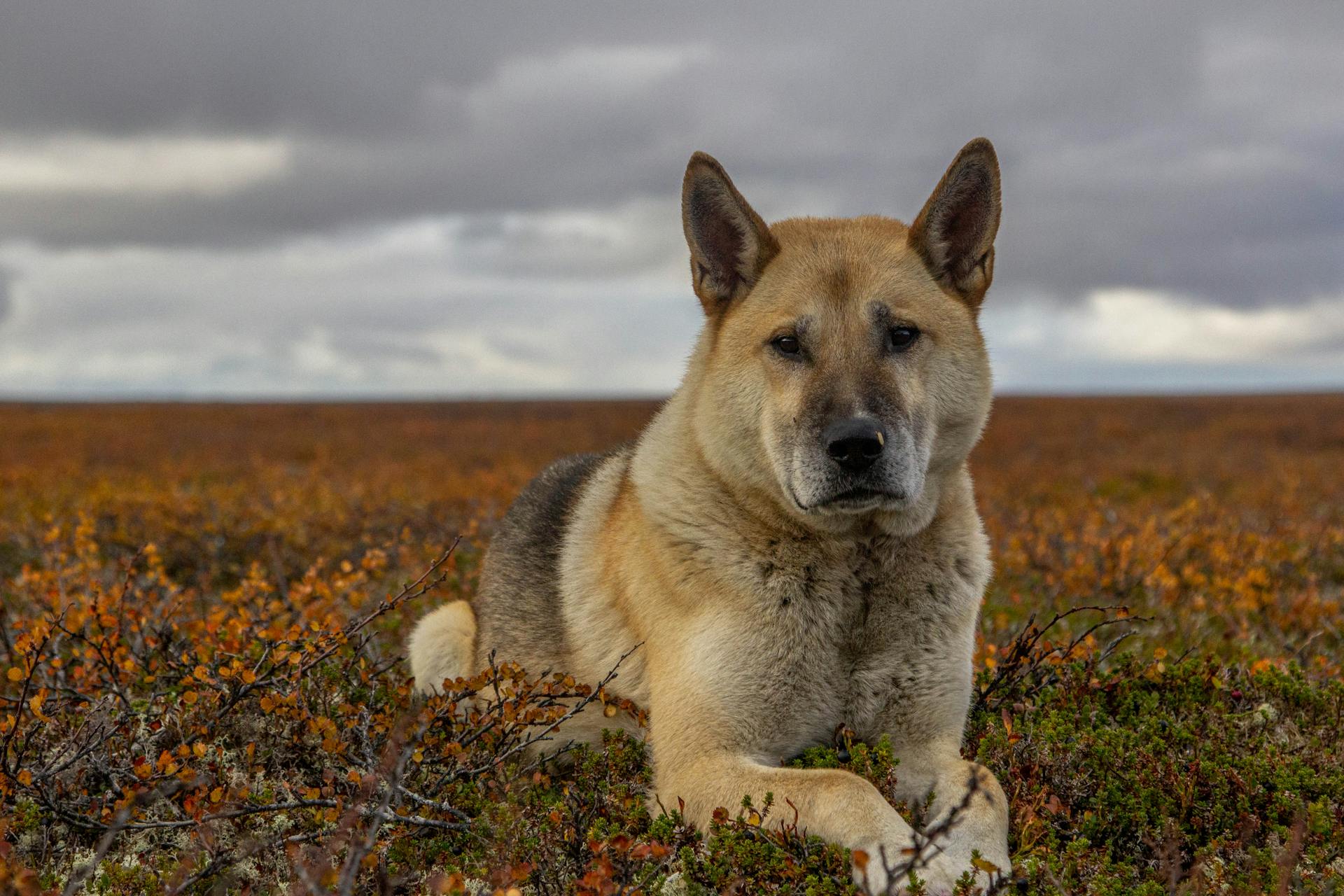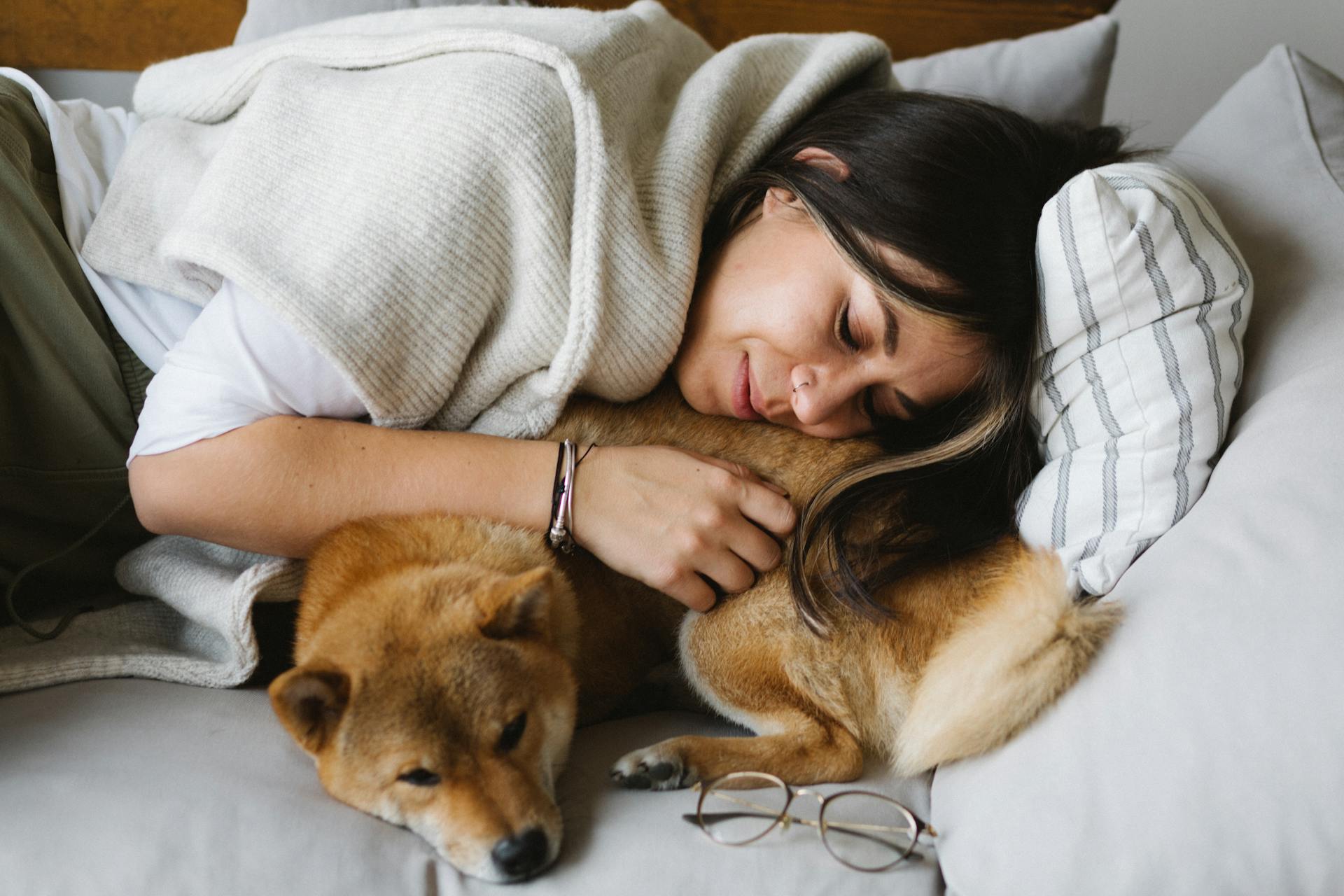
Tosa Inu are a breed of dog that originated in Japan and were originally bred for fighting.
They have a strong prey drive and can be aggressive towards other animals.
Tosa Inu are known to be loyal and protective of their families, but this can sometimes manifest as aggression towards strangers.
Their short coats require minimal grooming, but they do need regular exercise to stay happy and healthy.
In Japan, Tosa Inu were often used as guard dogs and were highly valued for their strength and tenacity.
However, their fighting background and strong instincts can make them a challenge to train and socialize.
Tosa Inu can weigh between 70-110 pounds and stand between 24-28 inches tall at the shoulder.
Their intelligence and athleticism make them a popular choice for dog sports and competitions.
Despite their loyal nature, Tosa Inu are not recommended for inexperienced dog owners due to their strong will and potential for aggression.
Here's an interesting read: Danger Top 10 Pitbull Dog
Ownership Restrictions
The Tosa Inu breed is subject to strict ownership laws and restrictions in many countries. The breed is banned or legally restricted at a national level in 17 countries, including the United Kingdom, Australia, and France.
In the United Kingdom, owning a Tosa Inu requires a special exemption from a British court to own and import them legally. This is due to the "Dangerous Dogs Act" declared in 1991.
Some countries have exceptions for tourists or short-term stays, such as Germany, which allows tourists staying for less than 4 weeks to bring their dogs, including Tosa Inus, with the necessary documents.
Before deciding to buy a Tosa Inu, it's essential to check your country's laws and restrictions, as they are constantly being updated.
Owning a Tosa Inu can also come with significant legal liabilities, especially when it comes to insurance companies.
Expand your knowledge: Owning a Shiba Inu
Temperament
Tosa Inu dogs have a strong character and can be aggressive towards other dogs, especially those of the same sex. They are very peaceful and good with their family, but also protective of them.
Tosa Inu dogs require a strong leader who will know how to handle them. Training should start while they are still puppies. Most of the aggression and attacks are due to poor training and handling.
Tosa Inu dogs respond well to positive reinforcements because they will do anything to please their owner. They are not good choices for first-time owners due to their strong character.
Tosa Inu dogs are very loyal and will react to one tone and timbre of voice, paying special attention to instructions. They have a natural need for protection and are brave and fearless.
Tosa Inu dogs need a charismatic owner who can show "who's in charge" without aggression and anger. A very important element of raising a Tosa Inu is socialization from an early age.
Tosa Inu dogs can become aggressive towards strangers, but in most cases, they will not become aggressive with people. They are reserved with strangers, but will not become aggressive with people.
Tosa Inu dogs are not recommended for inexperienced dog owners due to their natural aggression. They become more dangerous with other dogs as they are pack dogs.
Tosa Inu dogs become very attached to their owners and the ones they love, guarding them with their life. They need to be properly trained and socialized from an early age.
Tosa Inu dogs have a high prey drive, which means they should not be around small children or animals. They also need to stay physically fit through daily walks and plenty of activity.
Socialization and Behavior
Socialization is key to raising a well-balanced Tosa Inu. It's essential to start the socialization process as soon as possible, introducing your puppy to other dogs, teaching them proper behavior, and exposing them to different sights, sounds, dogs, and people.
Tosas can be naturally aggressive, so it's crucial to socialize them early and often. This will help them get used to situations and other dogs, reducing the likelihood of aggressive reactions.
Tosas are intelligent dogs, but they can be stubborn, making training a challenge. They require a great deal of effort to make them follow their owner's way of thinking, and early socialization is essential to this process.
They can be excellent with kids if raised together, but it's essential to be careful and avoid rough play, which can trigger their fighting instincts.
Socialization
Socialization is crucial for Tosas, as they were created for fighting and their genes can influence their behavior. They require early socialization to become great and well-balanced dogs.
Tosas are intelligent dogs, but they can be stubborn, so it's essential to start socialization as soon as possible. This will help them get used to situations and other dogs, reducing the likelihood of aggressive reactions.
Massive and powerful, Tosas can be intimidating, but with proper socialization, you can raise them to be well-behaved companions. They need to be introduced to different sights, sounds, dogs, and people to become confident and calm in new situations.
Proper socialization will make your life easier as a Tosa owner, allowing you to walk your dog without worrying about aggressive behavior. It will also ensure that your Tosa grows into a great dog with no behavior problems later in life.
Recommended read: Japanese Akita Behavior
The Kids
Tosa Inu and kids can be a great match if raised together, but it's crucial to be careful and avoid rough play to prevent triggering their fighting instincts.
They will know how to play with kids, but their massive size means they could accidentally hurt them, so always watch them play.
Tosa dogs often don't mature until 4 years of age, which means they may still be developing their social skills and impulsivity control.
This can sometimes lead to overexcitement or aggression, so it's essential to supervise interactions between Tosa Inu and kids closely.
Health Problems
Tosa Inu dogs have an average life expectancy of 10-12 years.
They are a primarily healthy breed, but like any other dog breed, they can develop certain health issues. Hip dysplasia, a common problem in large breeds, can affect their mobility and quality of life.
Gastric dilation volvulus (GDV) and bloat are also potential health risks for Tosa Inu dogs. This can be a life-threatening condition if not treated promptly.
Eye conditions are another health issue that Tosa Inu dogs may face. Regular veterinary check-ups can help detect any eye problems early on.
Taking care of a Tosa Inu's nutrition is crucial, especially since they are prone to obesity due to their large size and appetite.
Origin and History
The Tosa Inu has a rich and complex history that spans several centuries. The breed was created in Japan between 1868 and 1912 by crossing the Japanese Shikoku-Inu breed with Western breeds.
This crossbreeding was done to create a strong dog with a strong fighting instinct, reflecting Japan's long history of dogfighting, which dates back to the 14th century. The breed was bred to be a formidable opponent in the ring.
In Japan, the Tosa is considered a national treasure and is highly respected, but it's also a rare breed, even in its country of origin.
Japanese
The Japanese Tosa has a rich history that spans almost 1,000 years. They originated from Shikoku island, specifically from a place called Tosa Wan, which is how they got their name.
Originally, the Japanese Tosa was a Nordic dog that was later bred with larger breeds like bulldog and mastiff-type dogs to make them bigger and stronger. This change in breeding led to their fighting ability.
The Japanese Tosa was bred to hunt large animals such as wild boar and puma, but they were also used for dogfighting in Asia. This history of dogfighting has led to the breed being banned in several countries.
In Japan, the Japanese Tosa is recognized as a guardian breed and is known for its loyalty to its owners. They are also known to be quite large, with males weighing between 54-77kg (120-170 pounds) and females weighing between 40-52kg (90-140 pounds).
The Japanese Tosa is a massive dog that gives the impression of a superb and confident dog. They are well-built, with heavy and strong muscles, and are known to be quite powerful.
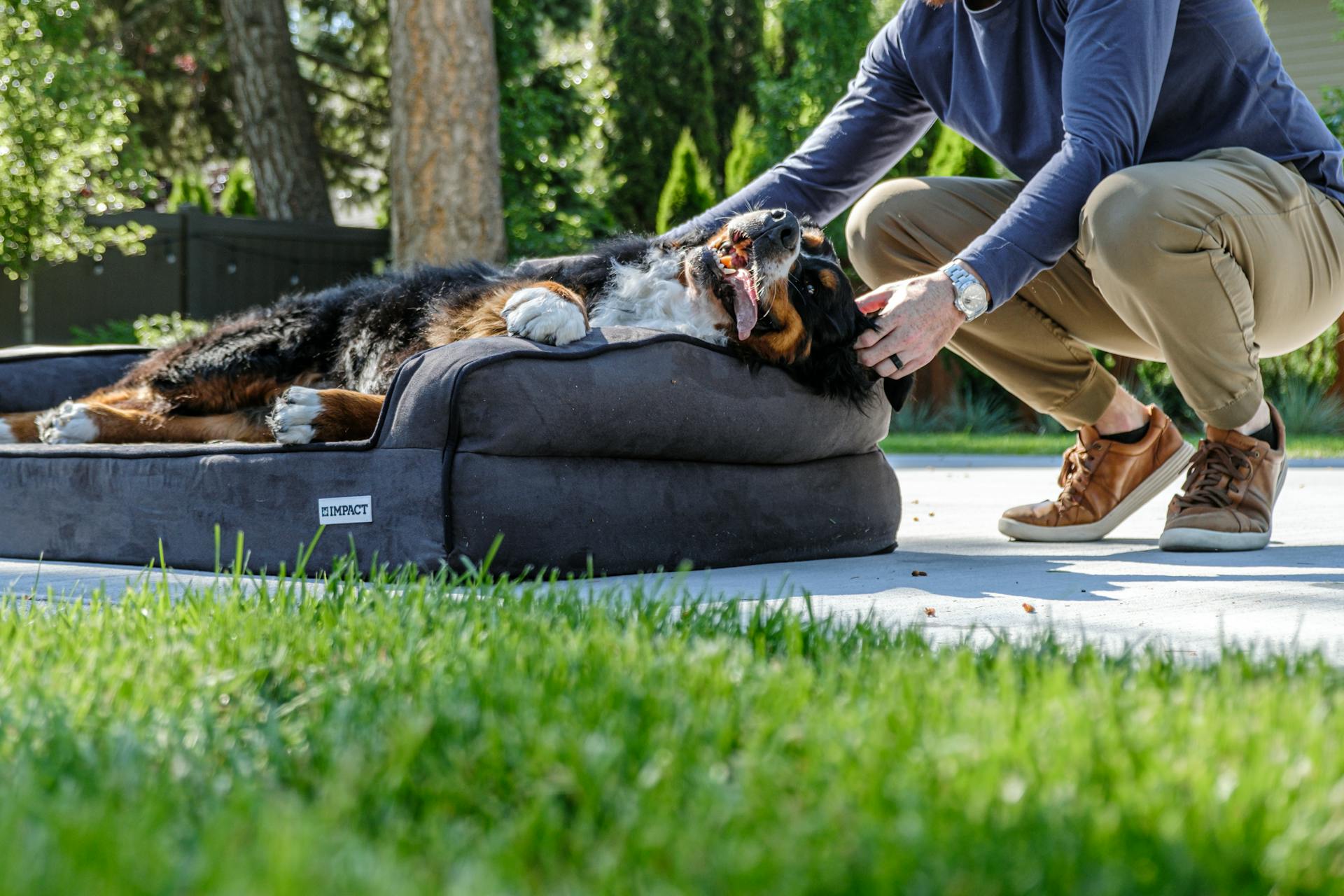
In Japan, the Japanese Tosa is significantly smaller than in the West, weighing about 30-40kg (66-88 pounds). Despite their size, they have a life expectancy of 10-12 years and can pull around 3000 pounds (around 1,000kg).
The Japanese Tosa is a breed that requires proper training and socialization from an early age. If not, they can become aggressive and turn on their owners in seconds. This is why it's not recommended for first-time dog owners.
Origin of the Breed
The Tosa Inu breed has a rich and complex history that spans several centuries. It originated in Japan, a country with a long history of dogfighting that dates back to the 14th century.
The breed was specifically created between 1868 and 1912 through crossbreeding with Western breeds such as the Great Dane, English Mastiff, English Bulldog, St. Bernard, and Bull Terrier. The goal was to create a strong dog with a strong fighting instinct.
In Japan, the Tosa Inu is considered a national treasure, and it's often referred to as the "sumo wrestlers of the canine world." The breed was bred for battle, and to this day, the Japanese mastiff is the leader in domestic dog fights.
Despite being banned in many countries, dogfighting is still a thriving underground sport, mainly in rural regions of Japan. This has led to the Tosa being considered a rare breed, even in its country of origin.
Canarian Guard Dog
The Canarian Guard Dog has a rather complex history. This breed was initially bred to kill, which makes sense given its natural aggression and high prey drive.
They were bred for fighting purposes, which is why they're not recommended for inexperienced dog owners. In fact, they're banned in many countries due to fatal injuries to people.
These dogs are incredibly loyal and will guard their owners with their life, but they need proper training and socialization to thrive. They become very attached to their owners and the ones they love.
With early socialization, they can be friendly and generally calm, but they need daily walks and plenty of activity to stay physically fit. They're not recommended for households with small children or animals.
Their history as a fighting breed has made them popular guard dogs among some owners, but they're not the best choice for inexperienced owners or those seeking a guard dog.
Breed Characteristics
Tosa Inus are known for their powerful build and muscular physique, which makes them a formidable opponent in dog fighting.
They are naturally protective of their family and territory, but this can sometimes be misinterpreted as aggression towards strangers.
Tosa Inus are not as energetic as other breeds and require moderate exercise to stay happy and healthy.
Their short coats require minimal grooming, but they do need regular nail trimming and ear cleaning.
Tosa Inus are intelligent dogs that can be challenging to train, especially for inexperienced owners.
They have a strong prey drive and may not get along with small pets, such as cats or rabbits.
Tosa Inus are generally quiet and don't bark much, but they will alert their owners to potential threats with a loud growl or snarl.
Their calm and reserved nature makes them a good fit for apartment living, but they still need regular exercise and mental stimulation.
Tosa Inus are loyal and loving to their families, but they can be wary of new people and may take time to warm up to them.
Their short stature and muscular build make them a compact and agile breed that can be a great companion for active owners.
Featured Images: pexels.com
